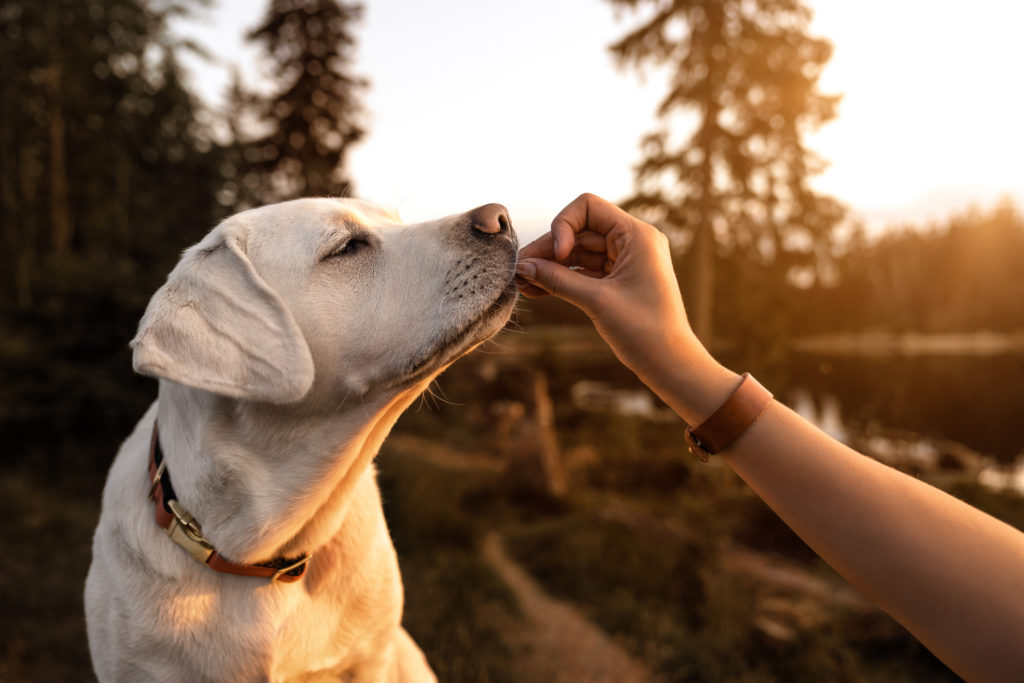Welcome to TheCollarClubAcademy.com, where we specialize in dog board and train services. If you’re a proud pup parent, you know that training your furry friend is an essential part of their development. But when is the right time to start training, and how much time should you invest each day? Let’s explore these questions and more.
- Start training your pup as early as possible to establish good behaviors.
- Dedicate at least 15 minutes each day for training sessions.
- Consider your pup’s breed, age, and background when determining the frequency and duration of training.
- Consistency is key to successful training.
- Enjoy the process and build a stronger bond with your furry friend.
Jump Ahead To
Training Your Puppy: Tips for Success

When it comes to training your puppy, starting early is key. The moment you bring your new furry friend home is the perfect time to begin their training journey. By using positive reinforcement techniques, you can teach your puppy the desired behaviors and set them up for a lifetime of good behavior.
Here are five tips for successful puppy training:
- Start with one command at a time: Begin training your puppy in a quiet and distraction-free environment. Focus on teaching them one command at a time, such as “sit” or “stay.” Once they have mastered one command, move on to the next.
- Be consistent: Consistency is key when it comes to puppy training. Dedicate 15-30 minutes each day to training your puppy. Regular practice will help reinforce their learning and establish good habits.
- Use positive reinforcement: Reward your puppy with treats, praise, and affection when they exhibit the desired behavior. Positive reinforcement creates a positive association with training and motivates your puppy to continue learning.
- Enroll in professional training classes: Consider enrolling your puppy in professional training classes. These classes provide expert guidance and socialization opportunities for your puppy. Trainers can also address any specific challenges you may be facing.
- Be patient and understanding: Every puppy is unique, and some may take longer to learn than others. Be patient with your puppy and understand that training takes time and consistency. Celebrate small victories and keep a positive attitude throughout the process.
| Training Tip | Description |
| Start early | Begin training your puppy as soon as you bring them home to establish good habits from the start. |
| Use positive reinforcement | Reward your puppy with treats, praise, and affection to motivate them and make training a positive experience. |
| Be consistent | Dedicate regular time each day to training your puppy and practice the desired behaviors consistently. |
| Enroll in training classes | Consider professional training classes for expert guidance and socialization opportunities for your puppy. |
| Be patient and understanding | Understand that every puppy learns at their own pace and be patient throughout the training process. |
Puppy Training: When to Start and What to Teach

Training your puppy is a crucial part of their development and sets the foundation for their behavior as adults. But when is the best time to start training, and what should you teach them? Here are some guidelines to help you navigate this important aspect of puppy care. For a free assessment to learn if your puppy is ready for training, contact a professional trainer like https://www.thecollarclubacademy.com/.
When to Start Training
It’s never too early to start training your puppy. From the moment they come home, they are ready to learn and soak up information. However, keep in mind that puppies have shorter attention spans, so it’s important to keep training sessions short and fun. Aim for 5-10 minutes a few times a day and gradually increase the duration as they grow older.
What to Teach

When it comes to puppy training, focus on teaching them basic obedience commands such as sit, stay, come, and lie down. These commands not only make your life easier but also ensure your puppy’s safety. Additionally, house training should be a priority to establish good potty habits. Socialization is another crucial aspect of training, as it helps them become comfortable and well-behaved around other people and animals.
Training Techniques
Positive reinforcement is the most effective and humane method of training for puppies. Reward your puppy with treats, praise, and affection when they perform a desired behavior correctly. It’s important to avoid punishment or harsh training methods as they can lead to fear and anxiety in your puppy. Instead, focus on being patient, consistent, and using positive reinforcement to encourage good behavior.
Training Resources

If you’re unsure about how to train your puppy or want professional guidance, consider enrolling in a puppy training class or hiring a professional dog trainer. These resources provide expert advice, structured training programs, and a supportive environment for both you and your puppy.
| Training Tips: | Key Takeaways: |
| Start training your puppy as soon as you bring them home. | Early training sets the foundation for good behavior. |
| Focus on teaching basic obedience commands and house training. | Commands like sit, stay, and come keep your puppy safe and well-behaved. |
| Use positive reinforcement to reward desired behaviors. | Rewards, praise, and treats help your puppy learn and enjoy training. |
| Consider enrolling in puppy training classes or hiring a professional trainer. | Expert guidance can provide structure and support for effective training. |
| Be patient, consistent, and make training sessions fun. | A positive and enjoyable training experience promotes better learning. |
Teaching Your Puppy to Enjoy Alone Time

As a dog owner, it’s important to teach your puppy to be comfortable spending time alone. This is beneficial for both you and your furry friend, as it allows your puppy to develop independence and reduces the risk of separation anxiety. Crate training and providing a safe confinement area are effective methods to help your puppy learn to enjoy alone time.
Crate training provides a secure space for your puppy and mimics a den-like environment. Start by introducing your puppy to the crate gradually, making it a positive and comfortable place. Place treats and toys inside the crate and encourage your puppy to explore. As your puppy becomes more comfortable, gradually increase the time they spend in the crate, rewarding calm behavior. Remember to never use the crate as a form of punishment.
In addition to crate training, creating a safe confinement area is another option. This can be a designated space in your home, such as an exercise pen. Make sure the area is puppy-proof and contains food, water, and toys to keep your puppy entertained.
Start by confining your puppy for short periods of time, gradually increasing the duration. Reward your puppy for calm behavior during confinement. Providing constructive activities, such as interactive toys or puzzle feeders, can also help keep your puppy engaged and content during alone time.
Tips for successful crate training and creating a safe confinement area:
- Introduce the crate or confinement area gradually, making it a positive space.
- Place treats, toys, and comfortable bedding inside the crate or confinement area.
- Start confining your puppy for short periods of time, gradually increasing the duration.
- Reward calm and relaxed behavior during crate training or confinement.
- Provide constructive activities, such as interactive toys or puzzle feeders, to keep your puppy entertained during alone time.
By implementing crate training or creating a safe confinement area, you can help your puppy develop positive associations with alone time. Remember to be patient and consistent in your training efforts. With time and practice, your puppy will learn to enjoy alone time, leading to a happier and well-adjusted companion.
| Benefits of Crate Training and Safe Confinement Area for Your Puppy |
| Teaches independence |
| Reduces separation anxiety |
| Provides a secure and comfortable space for your puppy |
| Prevents destructive behaviors when left alone |
| Promotes a well-adjusted and confident adult dog |
Helping Your Puppy Adjust to Being Alone

When it comes to helping your puppy adjust to being alone, there are several options you can consider. One of the first things to think about is hiring a puppy sitter or a dog walker. These professionals can provide companionship and assistance with potty training while you’re away. Not only will your puppy have someone to keep them company, but they’ll also get the attention and care they need.
Before leaving your puppy alone, it’s essential to engage them in physical or mental activities to tire them out. This can include playing fetch, going for a walk, or providing puzzle toys that stimulate their mind. By expending their energy beforehand, your puppy will be more likely to relax and settle down during their alone time.
Gradually increasing the duration of alone time is crucial for your puppy’s adjustment. Start with short periods and gradually build up to longer intervals. This helps your puppy become more comfortable being alone and reduces the likelihood of separation anxiety. By taking these steps, you can provide a positive and safe environment for your puppy to adjust and thrive.
Schedule of Alone Time Activities
| Activity | Duration | Notes |
| Engage in physical exercise | 15-30 minutes | Play fetch, go for a walk |
| Provide mental stimulation | 15-30 minutes | Use puzzle toys, interactive games |
| Introduce alone time | 5-10 minutes | Gradually increase duration |
| Use positive reinforcement | N/A | Reward calm behavior, provide treats |
Creating a Positive Association with Alone Time

When it comes to helping your puppy adjust to being alone, there are several strategies you can use to create a positive association with alone time. These techniques can make the experience more enjoyable for your pup and help them feel calm and secure when you’re not around.
Constructive Activities
Providing constructive activities for your puppy is essential during alone time. One effective option is to offer stuffed chew toys that can keep them occupied and engaged. These toys can provide mental stimulation and help alleviate any anxiety your puppy may feel when left alone. Remember to choose toys that are safe and appropriate for your puppy’s age and size.
Background Noise
Background noise can play a significant role in creating a positive association with alone time. You can use a sound machine or soothing music to mask any distressing sounds that may cause your puppy to become anxious or fearful. The gentle background noise can create a calming environment and help your puppy feel more relaxed and comfortable during their solo adventures.
Consistency and Rewards

Consistency is key when it comes to helping your puppy adjust to being alone. Establish a routine and stick to it to provide your pup with a sense of security and predictability. Additionally, be sure to reward your puppy for calm behavior during alone time. Positive reinforcement, such as treats or praise, can reinforce the idea that being alone is a positive and rewarding experience for your furry friend.
By implementing these strategies and creating a positive association with alone time, you can help your puppy become more independent and confident when you’re not around. Remember to be patient and give your puppy time to adjust to this new experience. With consistent training and positive reinforcement, your pup will soon learn to enjoy their alone time and become a well-adjusted adult dog.
Conclusion
After considering the various aspects of puppy training, it is clear that teaching your puppy to enjoy alone time brings numerous benefits. This training not only helps prevent problem behaviors when left alone but also reduces the risk of separation anxiety. By acclimating your puppy to being alone in a positive and gradual manner, you are preparing them for important training milestones, such as the AKC S.T.A.R. Puppy test.
One of the key advantages of training your puppy to be calm and confident when alone is the peace of mind it brings. Leaving your well-behaved adult dog at home becomes less worrisome, knowing they are comfortable and content during your absence. Additionally, by instilling positive associations with alone time, you are fostering a sense of independence and self-assurance in your puppy.
Investing time and effort into training your puppy to enjoy alone time is a worthwhile endeavor. Not only will it benefit their overall well-being, but it will also strengthen the bond between you and your furry companion. Remember to utilize constructive activities and reward-based training methods to make the experience enjoyable for your puppy.
In conclusion, the benefits of training your puppy to enjoy alone time cannot be underestimated. By laying a strong foundation through positive reinforcement and consistent training, you are setting your puppy up for a lifetime of well-adjusted behavior. Embrace the journey of puppy training and witness the transformation of your adorable pup into a confident and independent adult dog.
FAQ’s
When should I start training my puppy?
It is recommended to start training your puppy as soon as you bring them home.
How much time should I invest in training each day?
Consistently dedicate 15-30 minutes to training your puppy each day.
What should I teach my puppy during training?
Start with house training, manners, and socialization, and gradually progress to basic commands like sit, stay, and walking on a leash.
How can I teach my puppy to enjoy alone time?
Start with a safe confinement area like a crate, gradually increase alone time, and provide constructive activities like chewing toys.
What can I do to help my puppy adjust to being alone?
Consider hiring a puppy sitter or dog walker, engage your puppy in physical or mental activities before leaving, and gradually increase alone time.
How can I create a positive association with alone time for my puppy?
Provide constructive activities like stuffed chew toys, use background noise like a sound machine or soothing music, and reward your puppy for calm behavior.
What are the benefits of training my puppy?
Training your puppy helps prevent problem behaviors, reduces the risk of separation anxiety, and prepares them for important training milestones.





